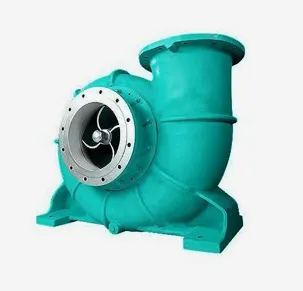Italian
- Afrikaans
- Albanian
- Amharic
- Arabic
- Armenian
- Azerbaijani
- Basque
- Belarusian
- Bengali
- Bosnian
- Bulgarian
- Catalan
- Cebuano
- Corsican
- Croatian
- Czech
- Danish
- Dutch
- English
- Esperanto
- Estonian
- Finnish
- French
- Frisian
- Galician
- Georgian
- German
- Greek
- Gujarati
- Haitian Creole
- hausa
- hawaiian
- Hebrew
- Hindi
- Miao
- Hungarian
- Icelandic
- igbo
- Indonesian
- irish
- Italian
- Japanese
- Javanese
- Kannada
- kazakh
- Khmer
- Rwandese
- Korean
- Kurdish
- Kyrgyz
- Lao
- Latin
- Latvian
- Lithuanian
- Luxembourgish
- Macedonian
- Malgashi
- Malay
- Malayalam
- Maltese
- Maori
- Marathi
- Mongolian
- Myanmar
- Nepali
- Norwegian
- Norwegian
- Occitan
- Pashto
- Persian
- Polish
- Portuguese
- Punjabi
- Romanian
- Russian
- Samoan
- Scottish Gaelic
- Serbian
- Sesotho
- Shona
- Sindhi
- Sinhala
- Slovak
- Slovenian
- Somali
- Spanish
- Sundanese
- Swahili
- Swedish
- Tagalog
- Tajik
- Tamil
- Tatar
- Telugu
- Thai
- Turkish
- Turkmen
- Ukrainian
- Urdu
- Uighur
- Uzbek
- Vietnamese
- Welsh
- Bantu
- Yiddish
- Yoruba
- Zulu
Telephone: +86 13120555503
Email: frank@cypump.com
Set . 14, 2024 06:13 Back to list
sewer lift pump
Understanding Sewer Lift Pumps Essential Components for Wastewater Management
In urban infrastructure, effective wastewater management is crucial for maintaining public health and environmental safety. One of the key components in this system is the sewer lift pump, a device specifically designed to transport wastewater from lower levels to higher elevations. This article explores the function, types, and importance of sewer lift pumps in modern sewage systems.
What are Sewer Lift Pumps?
Sewer lift pumps are devices that move wastewater against the force of gravity. They are commonly used in areas where the sewage cannot flow freely due to topographical challenges, such as low-lying regions, basements, or municipal systems that require elevation changes to connect to treatment facilities. These pumps ensure a continuous flow of waste, preventing backups and overflows, which can lead to unsanitary conditions.
How Do They Work?
The operation of a sewer lift pump is relatively straightforward. When wastewater enters the lift station, it is collected in a wet well, which is a basin designed to hold and monitor the sewage levels. Once the liquid reaches a predetermined height, the pump is activated, drawing the wastewater into its system. The pump then forces the sewage upward through a discharge pipe towards the appropriate municipal sewer line or treatment facility.
sewer lift pump

There are two primary types of lift pumps submersible and dry pit pumps. Submersible pumps function while submerged in the wastewater, which helps reduce the risk of vapor emission and makes them more efficient for deep installations. In contrast, dry pit pumps are mounted above the wastewater level and are connected to the wet well via a suction pipe. While they are easier to maintain due to their accessible installation, they may require additional features to ensure they are airtight and odor-proof.
The Importance of Sewer Lift Pumps
The significance of sewer lift pumps cannot be overstated. They play a vital role in preventing sewer backups, which can cause property damage, health hazards, and environmental contamination. By ensuring wastewater flows properly to treatment facilities, lift pumps contribute to cleaner cities and protect water sources from pollution.
Moreover, the efficiency and reliability of sewer lift pumps are crucial during heavy rainfall events or snowmelt seasons when the volume of wastewater can increase significantly. Without a properly functioning lift pump, sewage systems can become overwhelmed, leading to potential health risks for the surrounding community.
Conclusion
In summary, sewer lift pumps are indispensable components of effective wastewater management systems. Their ability to move sewage against gravity allows urban areas to maintain clean and safe environments for residents. As cities continue to grow and face various environmental challenges, investing in reliable and efficient sewer lift pump technology will be essential for sustainable urban development and public health. Understanding how these systems work and their importance enables better maintenance and future innovations to protect our communities and ecosystems.
-
Reliable Non-Clog Sewage Pumps with GPT-4-Turbo Tech
NewsAug.04,2025
-
High-Performance Air Pumps for Sand & Gravel | Efficient Transport
NewsAug.03,2025
-
ISG Series Vertical Pipeline Pump - Chi Yuan Pumps Co., LTD.|Energy Efficiency, Corrosion Resistance
NewsAug.03,2025
-
ISG Series Pipeline Pump - Chi Yuan Pumps | Energy Efficiency&Compact Design
NewsAug.03,2025
-
ISG Series Vertical Pipeline Pump - Chi Yuan Pumps Co., LTD.|High Efficiency, Low Noise, Durable
NewsAug.02,2025
-
ISG Series Vertical Pipeline Pump - Chi Yuan Pumps | High Efficiency, Low Noise
NewsAug.02,2025










